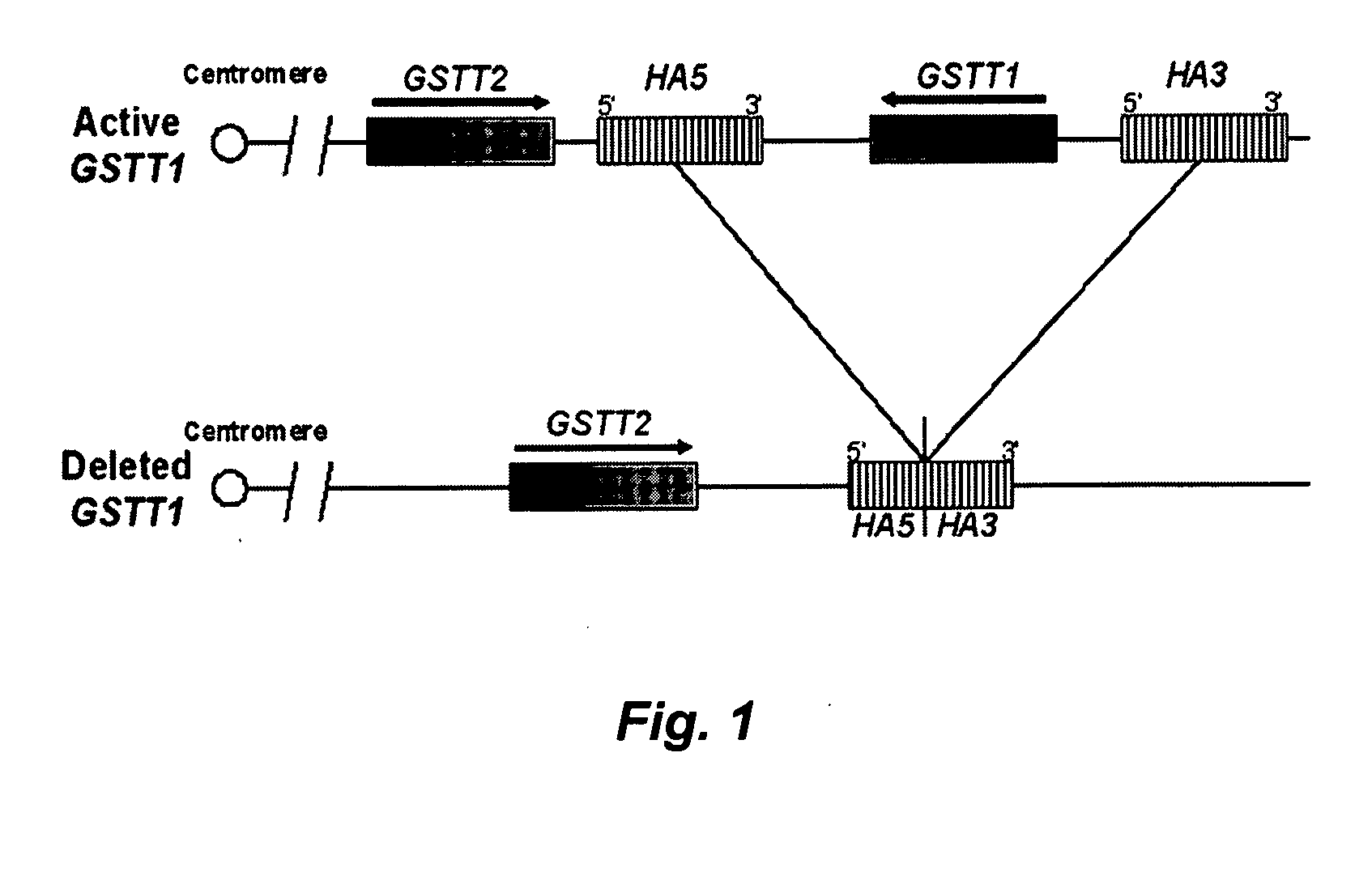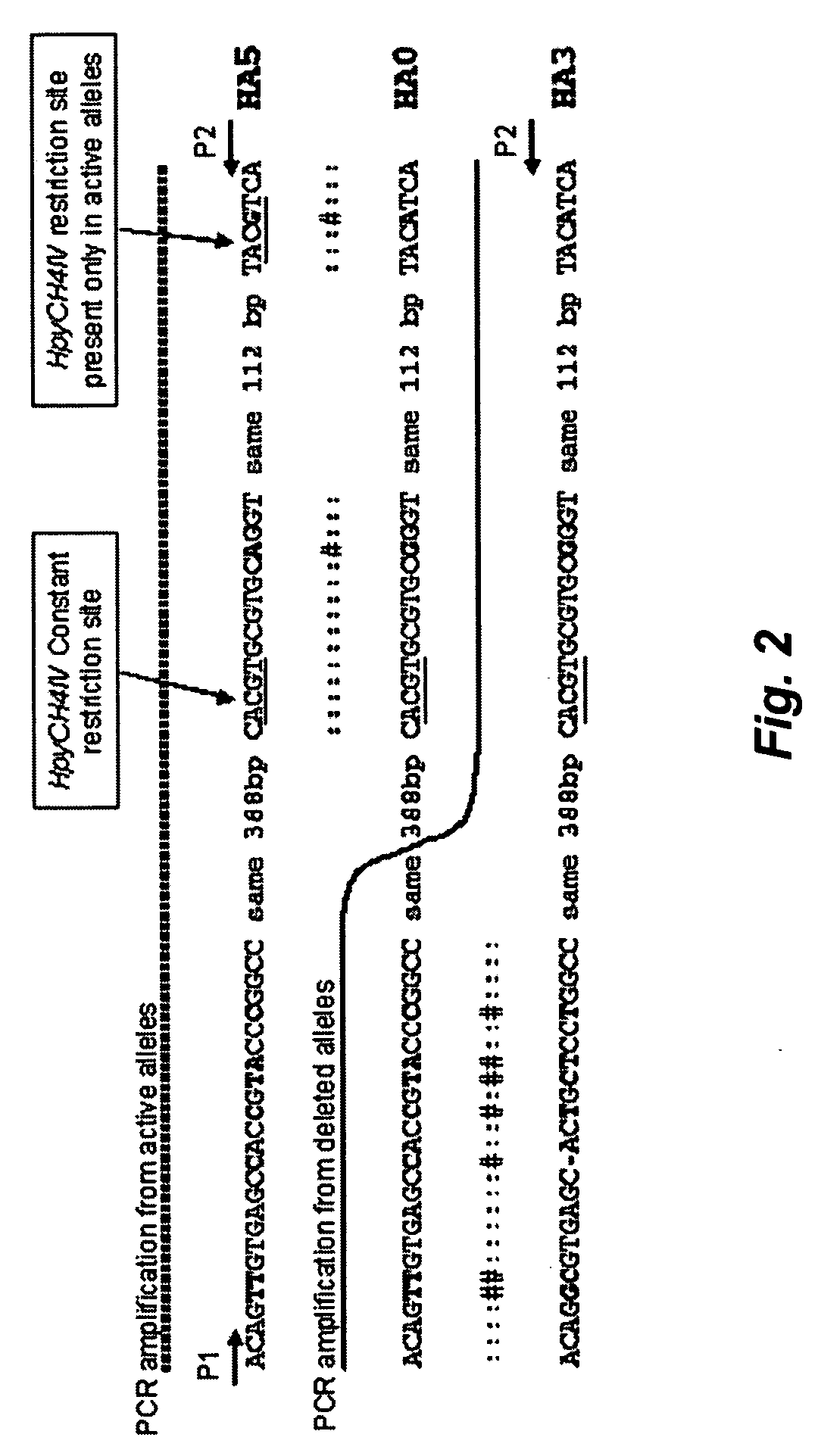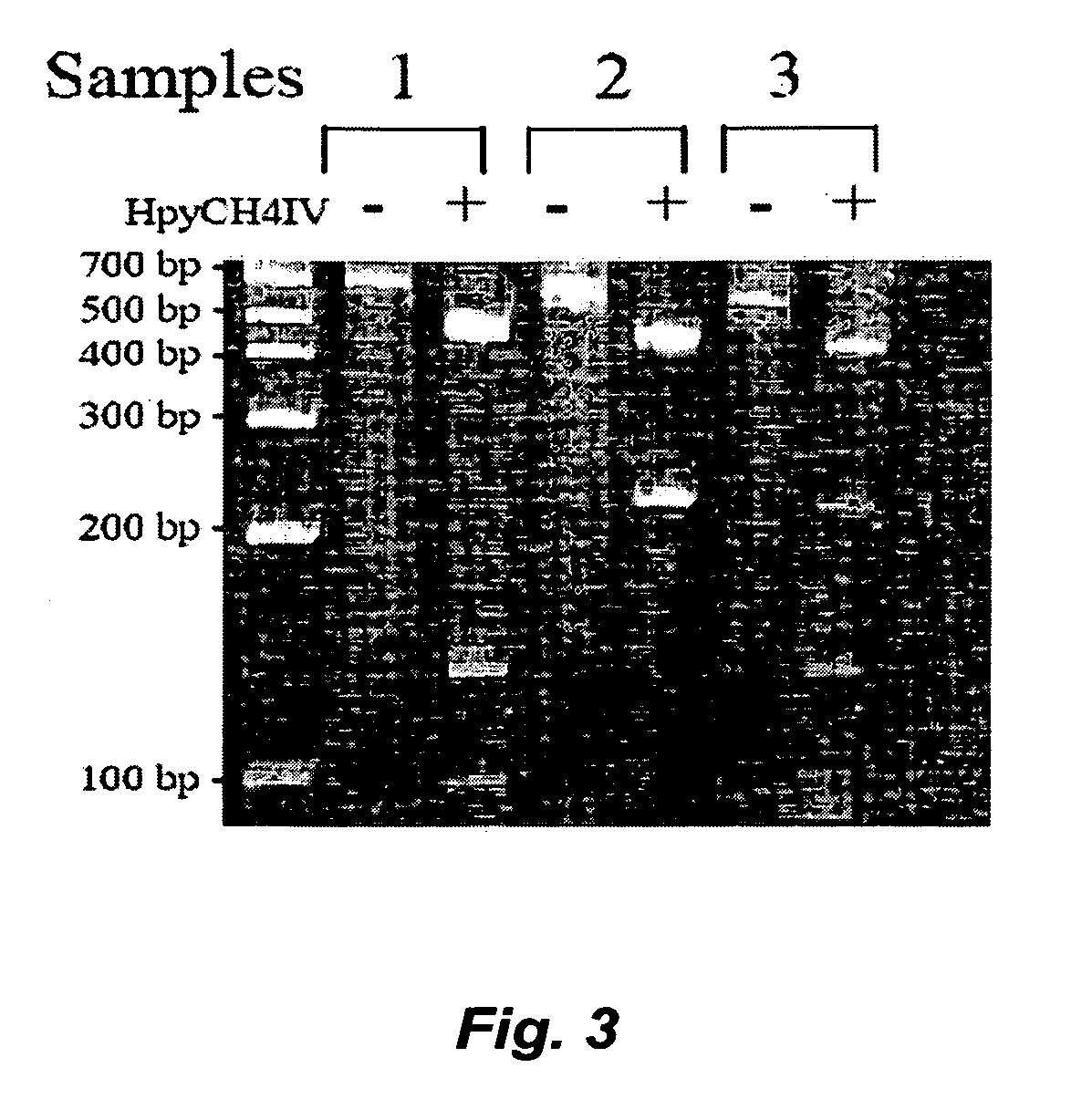Methods for determining glutathione S-transferase theta-1 genotype
a technology of glutathione s-transferase and genotype, which is applied in the field of methods for determining gstt1 genotype, can solve the problems of failure of pcr reaction and lack of amplification product, and achieve the effect of avoiding lack of certainty
- Summary
- Abstract
- Description
- Claims
- Application Information
AI Technical Summary
Benefits of technology
Problems solved by technology
Method used
Image
Examples
example 1
Development of a New Glutathione S-Transferase Theta-1 PCR-Based Assay.
[0073] Many previous reports have described a relation between GSTT1 null genotype and cancer. To date, however, there has been no straightforward way to determine heterozygous genotypes of GSTT1. We were interested in precisely determining the heterozygous status of GSTT1 because (a) we believe an increased risk of meningioma progression is found in patients heterozygous for GSTT1 compared to patients homozygous active and (b) because with NF2 loss of heterozygosity (LOH) in the tumor, an individual who was initially heterozygous for GSTT1 might lose the remaining active allele in the tumor tissue and increase even more their chances of tumor progression.
[0074] The deletion breakpoints of the GSTT1 polymorphism involve the recombination of two repetitive elements, HA5 and HA3, flanking the GSTT1 gene FIG. 2. After recombination between both repetitive elements, the GSTT1 deleted allele consists of the 5′ end o...
example 2
Applying the New GSTT1 PCR Assay to a Group of NF2 Patients
[0081] We applied the PCR-based GSTT1 assay described in Example 1 to DNA samples from a subset of the patients currently enrolled in a natural history study of NF2 patients. The study examined NF2 patients primarily from the House Ear Institute (HEI, Los Angeles, Calif.), Massachusetts General Hospital (MGH, Boston, Mass.), the St. Mary's Hospital (United Kingdom) and Klinikum Nord Institute (Germany). The entry criteria were that the individuals were NF2 patients with confirmed diagnosis of NF2 since 1993 and presence of intracranial and / or spinal tumors. A total of 88 patients with 20 years of age or older were enrolled in this study, including 48 HEI patients and 13 MGH patients. At entry, each patient donated a small blood sample to the study for definition (or confirmation) of the underlying genomic change in the NF2 gene. Subsequently, each patient underwent yearly evaluation which includes cranial MRI, spinal MRI, o...
example 3
Determining GSTT1 Status in Sporadic Meningioma Patients
[0089] Using the PCR-based assay described in Example 1, we determined the GSTT1 status in 58 of our group of 62 patients informative at the NF2 locus. Twenty-one percent (12 / 58) of the patients had a null genotype, while 52% (30 / 58) and 27% (16 / 58) were heterozygous and homozygous for the GSTT1 active allele, respectively. It is interesting to note that the Hardy-Weinberg equilibrium is not observed, with the heterozygous genotype slightly over-represented. Our results corroborate a previous report of 270 Swedish individuals from a control group in which the GSTT1 null genotype was found in 10% of the population (Warholm, Rane et al. 1995). In this report additional phenotypic analysis of the samples showed that 50% of the samples were partial-conjugators (instead of the expected 40%) and 40% of the samples were full-conjugators (instead of the expected 50%). Frequency of GSTT1 null genotype among our sporadic meningioma pati...
PUM
| Property | Measurement | Unit |
|---|---|---|
| volume | aaaaa | aaaaa |
| length | aaaaa | aaaaa |
| size | aaaaa | aaaaa |
Abstract
Description
Claims
Application Information
 Login to View More
Login to View More - R&D
- Intellectual Property
- Life Sciences
- Materials
- Tech Scout
- Unparalleled Data Quality
- Higher Quality Content
- 60% Fewer Hallucinations
Browse by: Latest US Patents, China's latest patents, Technical Efficacy Thesaurus, Application Domain, Technology Topic, Popular Technical Reports.
© 2025 PatSnap. All rights reserved.Legal|Privacy policy|Modern Slavery Act Transparency Statement|Sitemap|About US| Contact US: help@patsnap.com



